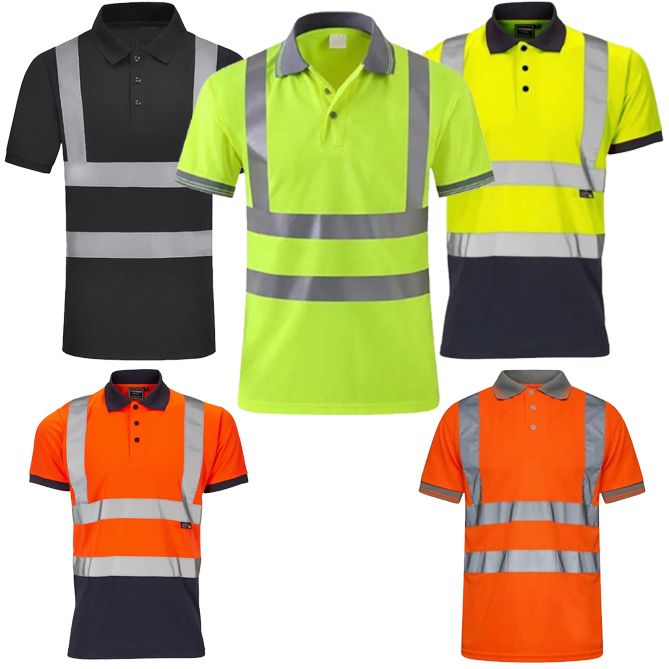item: £0
- help@hxmsharp.com
- +447311670153

High-visibility (hi-vis) clothing plays a crucial role in ensuring the safety of workers in environments where visibility is paramount. Whether it's construction sites, roadworks, or emergency response situations, wearing the appropriate hi-vis attire can significantly reduce the risk of accidents. This guide delves into the standards governing hi-vis clothing, the components that make it effective, and the importance of compliance.
Hi-vis clothing is designed to make the wearer more visible in various lighting conditions, thereby enhancing safety. It's especially vital in industries where workers are exposed to moving vehicles or machinery. The use of fluorescent materials and reflective strips ensures that individuals stand out against their surroundings, reducing the likelihood of accidents.
This international standard specifies requirements for hi-vis clothing capable of visually signaling the user's presence. It assesses the suitability and durability of materials used, ensuring that garments provide adequate visibility in high-risk situations. Certificates under this standard are valid for five years, ensuring that garments remain up-to-date with safety requirements.
Previously, BS EN 471 was the British standard for hi-vis clothing, focusing on the conspicuity of garments. It classified clothing based on the minimum area of conspicuous materials and the performance of retroreflective materials. While EN ISO 20471 has superseded it, understanding BS EN 471 provides context for the evolution of hi-vis standards.
Fluorescent Material: Enhances visibility during daylight hours by converting UV light into visible light, making the wearer more noticeable.
Reflective Strips: These are crucial for nighttime visibility. They reflect light back to its source, such as vehicle headlights, ensuring the wearer is seen in low-light conditions.
Contrast Material: Often darker fabrics used in areas prone to dirt accumulation, helping maintain the garment's visibility and appearance over time.
For a garment to be certified under EN ISO 20471, it must meet specific criteria:
Minimum Areas: Defined amounts of fluorescent and reflective materials must be present.
Placement: Reflective strips should be strategically placed to outline the human form, enhancing recognition.
Physical Properties: The garment must meet standards for tensile strength, thermal resistance, and dimensional stability, ensuring durability and performance in various conditions.
Employers have a duty to provide appropriate hi-vis clothing to employees exposed to risks due to low visibility. This includes ensuring the clothing is;
Suitable: Appropriate for the specific risks and conditions of the workplace.
Maintained: Regularly checked and kept in good condition.
Accessible: Provided free of charge and readily available to employees.
Educated Use: Employees should receive training on the correct use and limitations of the hi-vis clothing. HSE
High-visibility clothing is a vital component of workplace safety in environments where visibility is compromised. Adhering to established standards like EN ISO 20471 ensures that garments provide the necessary protection. Employers and employees alike must recognize the importance of proper hi-vis attire and commit to its correct usage and maintenance.